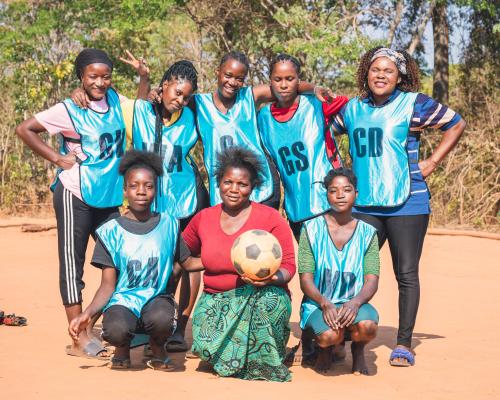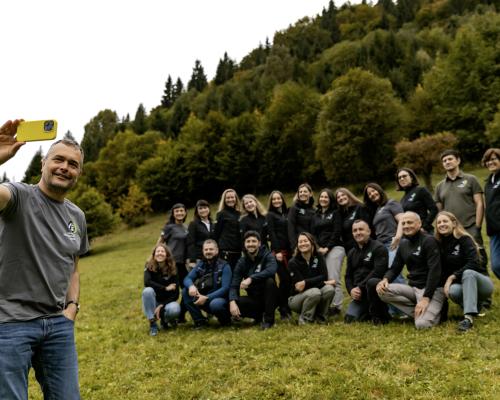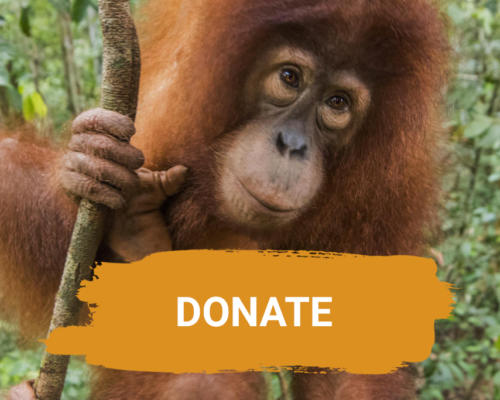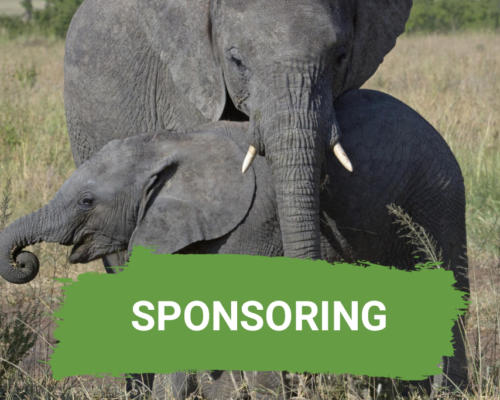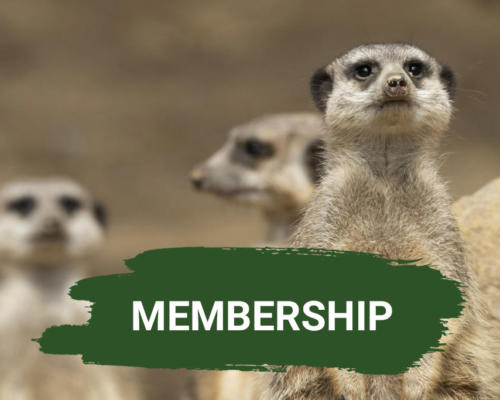Six wild Przewalski’s horses released in Kazakhstan’s steppe, which marks a major milestone in species recovery and steppe ecosystem restoration.
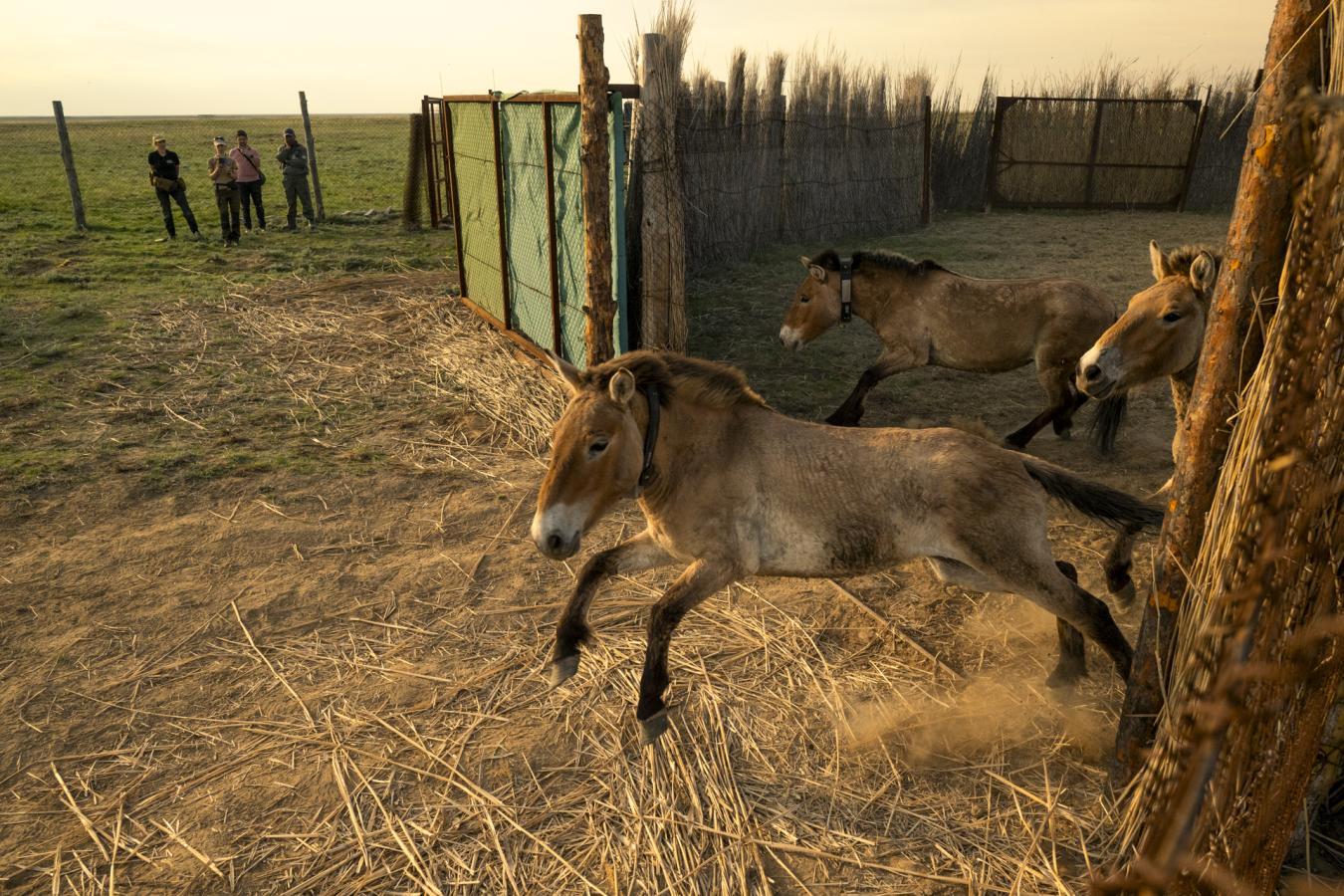
Przewalski’s Horses Released into the Steppe in Kazakhstan
Kostanay Region, Kazakhstan – 4th June, 2025
Six Przewalski’s horses, known locally as Kertagy, have been released into the wild from the Ungulate Reintroduction Center after a year of acclimatization. This marks an important step in restoring the species within its historical range and strengthening the resilience of Kazakhstan’s steppe ecosystems.
This marks a global milestone in restoring the population of the world’s last truly wild horse (Equus przewalskii) and contributes towards another layer in the full restoration of Central Asia’s steppe ecosystems.
Przewalski’s horses, which disappeared from Kazakhstan’s wild landscapes more than 200 years ago, have once again found their place in their native steppes. The species was declared extinct in the wild in 1969 and survived only due to breeding programs under human care in zoos. Today, thanks to the reintroduction efforts of a large international partnership, these steppe dwellers are once again reclaiming their native habitat. Large herbivores are vital to steppe ecosystem health because their grazing, trampling, and nutrient cycling maintain vegetation structure, prevent shrub encroachment, and enhance biodiversity, thereby reducing desertification and wildfires.
Wild ungulates, including Przewalski’s horses, play a crucial role in restoring the natural balance of the steppes. We are proud that Kazakhstan is the first country in Central Asia to welcome the return of these unique animals.
The Kertagy are being successfully reintroduced into Kazakhstan because of international cooperation and the expertise of Prague Zoo, who have brought these animals back to Mongolia. Once the Kertagy are in Kazakhstan, their acclimatization, wellbeing and care is done by the Altyn Dala Conservation Initiative, whose mission is the restoration and protection of steppe ecosystems and key species, including kulan, saiga, and now Przewalski’s horses.
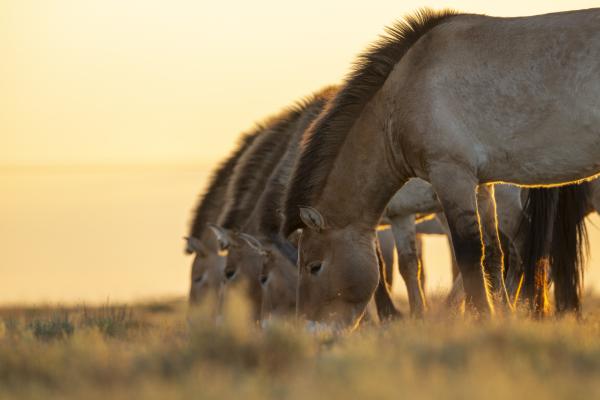
The release of the first Przewalski’s horses into the wild in Central Kazakhstan is a significant milestone in the efforts to restore the species to its historic range. Their successful year at the reintroduction centre is a testament to the dedication and professionalism of our team of specialists and veterinarians.
The horses were brought by the zoos of Prague and Berlin in June 2024 and spent a year at a specially equipped Reintroduction Center, where they adapted to local conditions and were subject to careful monitoring by staff and partners from the Altyn Dala Conservation Initiative including veterinarians, caretakers, and interns. Here, the Kertagy, who are used to living in zoos and wildlife parks, have learned to forage independently, dig for water and grass under the snow, and have become acquainted with the extremes of climate in the central steppe.
Two of the mares have been fitted with satellite collars so that once released they are traceable, and the monitoring can continue. The network of protected areas and ecological corridors they will now call home stretch an incredible 40,000km2 and being able to track them in this vast landscape is essential to their long-term protection.
The reintroduction of wild horses to Kazakhstan is a fantastic example of how international cooperation can return a species once lost to nature back to its natural habitat. We are thrilled to have worked together so successfully in order to prepare these beautiful animals for a life in the wild, and we are now pleased to welcome the new arrivals to their year of acclimatization.
The reintroduction of the Przewalski’s horse to Kazakhstan is made possible through an international partnership consisting of Prague Zoo, the Committee for Forestry and Wildlife of Kazakhstan, Association for the Conservation of Biodiversity of Kazakhstan, Frankfurt Zoological Society, Nuernberg Zoo, Tierpark Berlin and Hortobaġy National Park.
The care, acclimatization and long-term monitoring of the reintroduced animals’ ecological impact are the responsibility of the Altyn Dala Conservation Initiative and its partners at the Leibniz Institute for Zoo and Wildlife Research (IZW). Established in 2005, the Altyn Dala Conservation Initiative is a long-term partnership between the Ministry of Ecology and Natural Resources of the Republic of Kazakhstan, the Association for the Conservation of Biodiversity of Kazakhstan (ACBK), Fauna & Flora, the Frankfurt Zoological Society (FZS), and the Royal Society for the Protection of Birds (RSPB). Its mission is to protect the integrity of Kazakhstan’s steppe ecosystems across the former range of the Saiga Antelope.

The Przewalski’s horse is the world’s last subspecies of truly wild horse. It was discovered in 1879 by explorer Nikolai Przewalski. By the mid-20th century, the species had vanished from the wild due to habitat loss, inbreeding with local horses and excessive hunting. Since then, surviving animals in zoos became the basis of breeding and recovery programs.
The Altyn Dala Reserve in the Kostanay Region was selected for reintroduction due to the natural conditions which closely resemble the horse’s historical range. It is one of the key areas for safeguarding the biodiversity of Kazakhstan’s steppes.
By 2029, it is planned to bring around 40–45 horses to the Turgai steppes — enough to ensure the natural growth of a self-sustaining population.
Press Contacts
Frankfurt Zoological Society
Stephanie Ward
ward@zgf.de
Tel. +49 (0)160 5430117
www.altyndala.org
Association for the Conservation of Biodiversity of Kazakhstan
Diana Baidauletova
pr@acbk.kz
Tel. +7 (0)702 2540099
www.acbk.kz
Photos for Media Use






